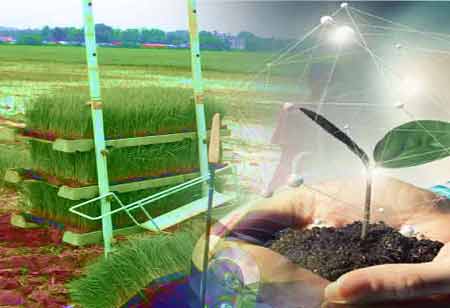Thank you for Subscribing to Agri Business Review Weekly Brief
Social and Environmental Challenges in the Aquaculture Sector
Aquaculture is gaining significant attention as a potential solution to global seafood demand.

By
Agri Business Review | Friday, November 24, 2023
Stay ahead of the industry with exclusive feature stories on the top companies, expert insights and the latest news delivered straight to your inbox. Subscribe today.
Collaboration, innovation, and responsible practices are essential to navigate these challenges and establish a thriving and sustainable aquaculture sector.
FREMONT, CA: Aquaculture is gaining significant attention as a potential solution to global seafood demand. Culture of aquatic organisms, such as fish, shellfish, and aquatic plants, is known as aquaculture. While aquaculture offers numerous benefits, including increased food production and reduced pressure on wild fish populations, it also faces many complex challenges that must be addressed for the industry to thrive sustainably. These challenges span environmental, economic, social, and regulatory dimensions, and they require innovative solutions to ensure the long-term viability of aquaculture.
Social challenges tied to aquaculture often revolve around labor conditions and community impacts. Labor-intensive operations in some aquaculture systems can lead to issues related to fair wages, working conditions, and labor rights. Aquaculture projects have sometimes displaced local communities or conflicted with traditional fishing practices, causing tensions and social disruptions. Ensuring that aquaculture development considers local communities' needs and rights is essential for fostering sustainable and socially responsible growth.
The paramount challenge in aquaculture is its potential environmental impact, necessitating the adoption of responsible cultivation practices. Effective waste management, judicious feed use, and responsible medication practices are essential. To counter this challenge, industry stakeholders must prioritize sustainable practices. This involves optimizing feed efficiency, adopting ecologically sound aquaculture systems, and implementing effective waste management strategies.
Disease outbreaks are a significant threat to aquaculture, resulting in economic losses and environmental harm. Vigilant disease management is essential. Mitigation measures include strict biosecurity protocols, comprehensive vaccination programs, and the development of disease-resistant strains through selective breeding and genetic enhancement. Embracing technology, such as early monitoring and detection systems like AquaHero, can also enhance disease management capabilities.
Effective regulatory frameworks and governance structures are pivotal for ensuring sustainable aquaculture practices. Achieving a balance between industry growth and environmental preservation is imperative. Transparent, science-based regulations and policies are essential to foster responsible practices, attract investments, and foster public confidence. Collaboration among governments, industry associations, and various stakeholders is crucial in establishing robust standards and guidelines that promote responsible aquaculture practices.
Public perception and acceptance pose additional challenges for the aquaculture industry. Environmental impact, animal welfare, and food safety concerns can influence public support. Addressing these concerns requires awareness-building initiatives that highlight the positive aspects of aquaculture. Programs can emphasize its role in combating overfishing, providing sustainable protein sources, and engaging local communities.
Aquaculture practices rely heavily on water quality parameters such as dissolved oxygen, temperature, salinity, hardness, ammonia, nitrite, and pH. This aspect is also critically important. These parameters are pivotal to the growth and health of aquatic organisms. Maintaining these parameters within optimal ranges is crucial for the success of aquaculture ventures across various commodities.
While aquaculture holds promise for addressing food security and reducing reliance on oceanic fishing, it faces multifaceted challenges. Sustainable growth requires consideration of environmental impact, disease management, regulatory frameworks, public perception, and water quality management.





